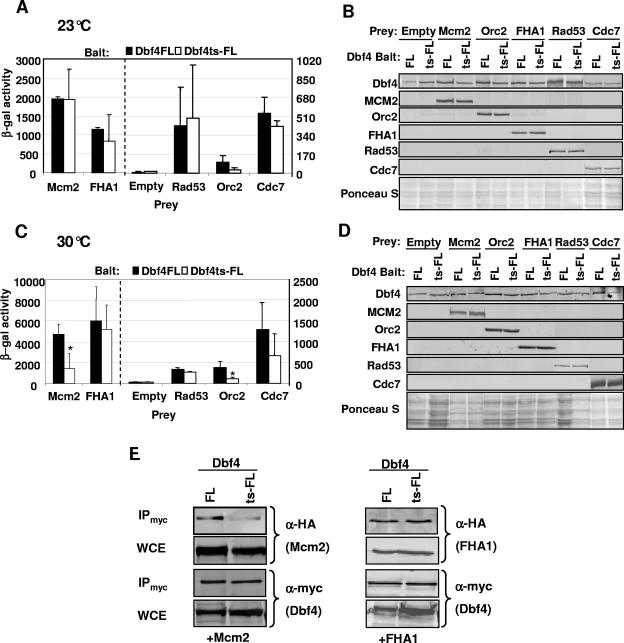FIG. 4.
Dbf4ts-FL has weakened interactions with both Orc2 and Mcm2. (A and C) Two-hybrid assays were carried out as described in Materials and Methods using bait constructs pEG-Dbf4-FL and pEG-Dbf4ts-FL. pJG-Mcm2, -Orc2, -FHA1, -Rad53, and -Cdc7 were used as prey, along with pJG 4-6 (empty). Induction of prey expression was carried out at either 23°C (A) or 30°C (C). Relative β-galactosidase activity is shown and in each case represents the average of at least three separate trials, with the error bars indicating standard deviations. Asterisks indicate a significant difference (P < 0.05; paired Student's t test) in the signal for Dbf4ts-FL relative to Dbf4-FL with equivalent preys. The dashed line indicates a separation of prey interactions for the left and right scales on the y axes. (B and D) Immunoblot analyses to verify bait and prey expression were carried out as described in the legend for Fig. 2. (E) Coimmunoprecipitation (IP) experiments were carried out as described in Materials and Methods. Shown are immunoblots of IP and input WCEs detected with either monoclonal anti-HA (for Mcm2 and FHA1 detection) or anti-Myc antibodies (for Dbf4FL and Dbf4ts-FL detection). In each case, 20 μg of the input WCE (determined by Bradford assay) and one-fourth of the final bead suspension were blotted.

